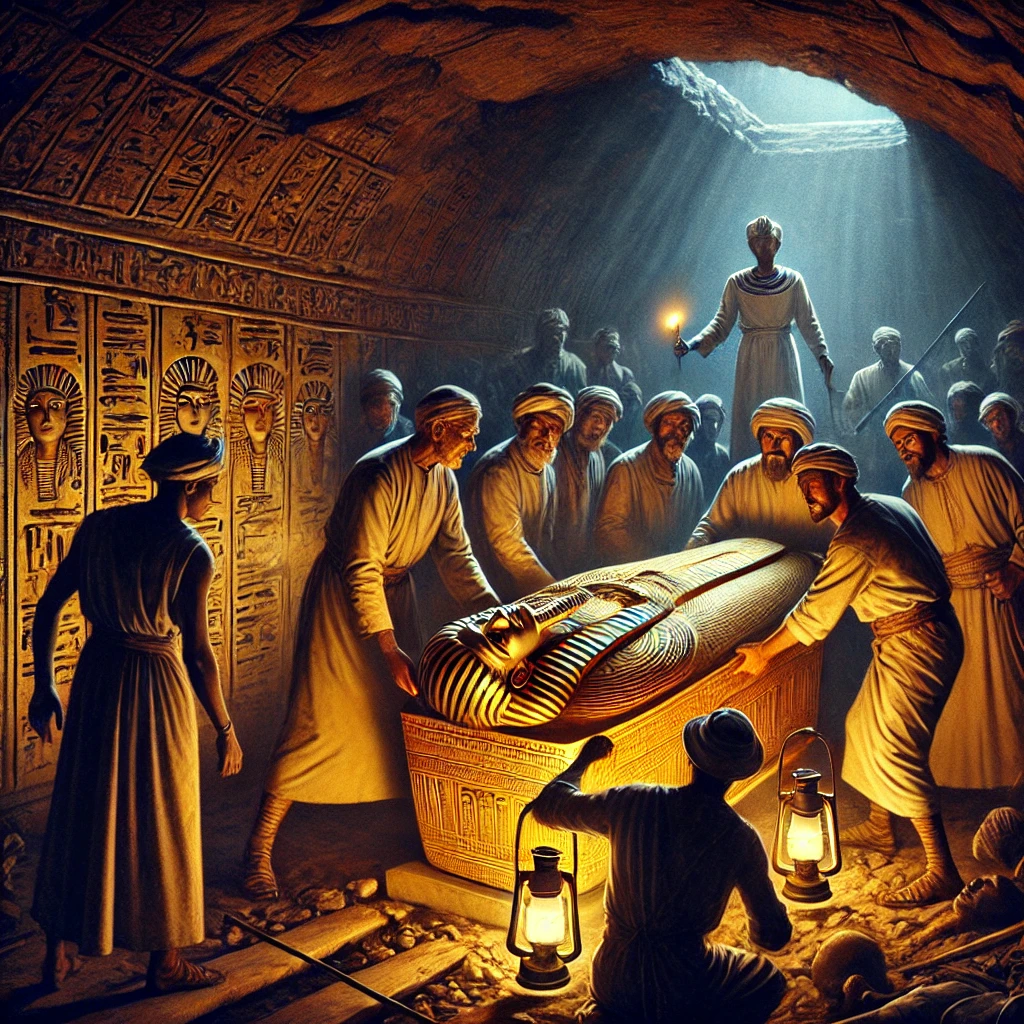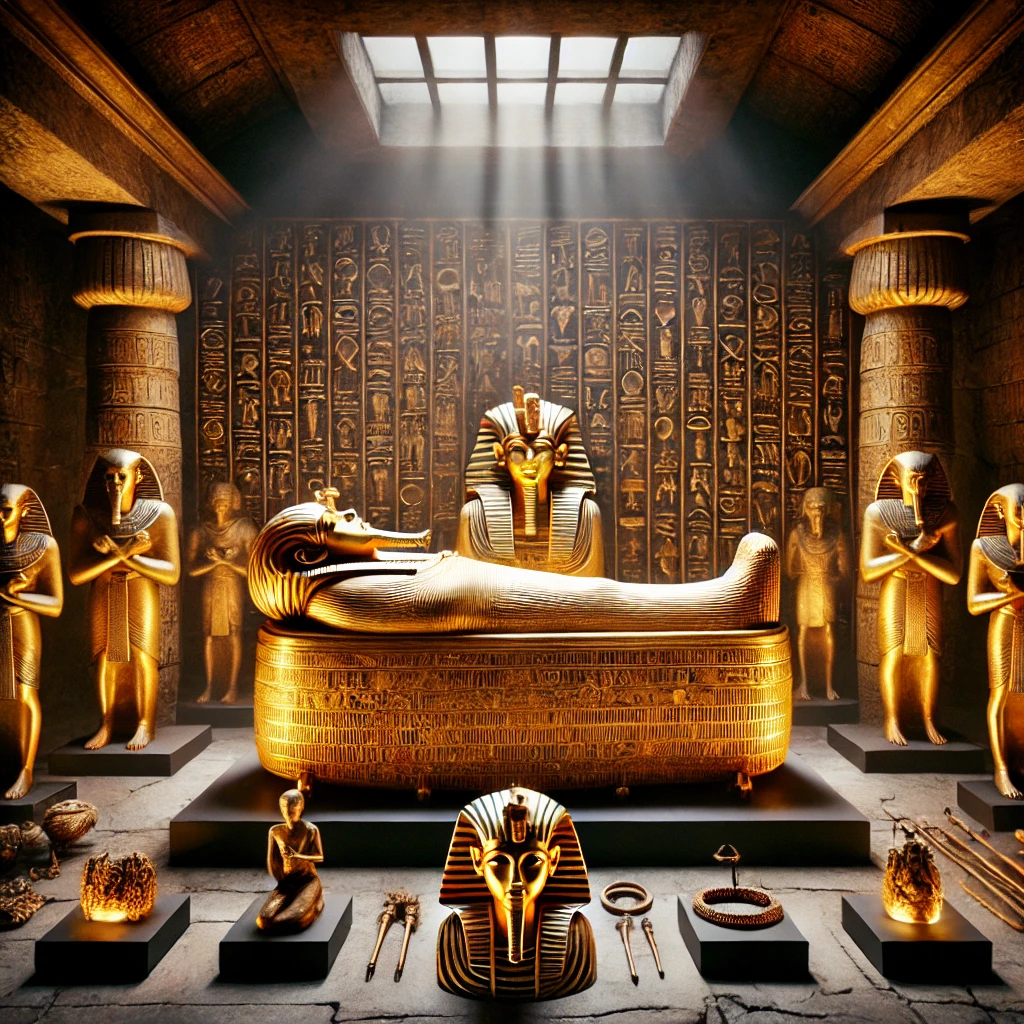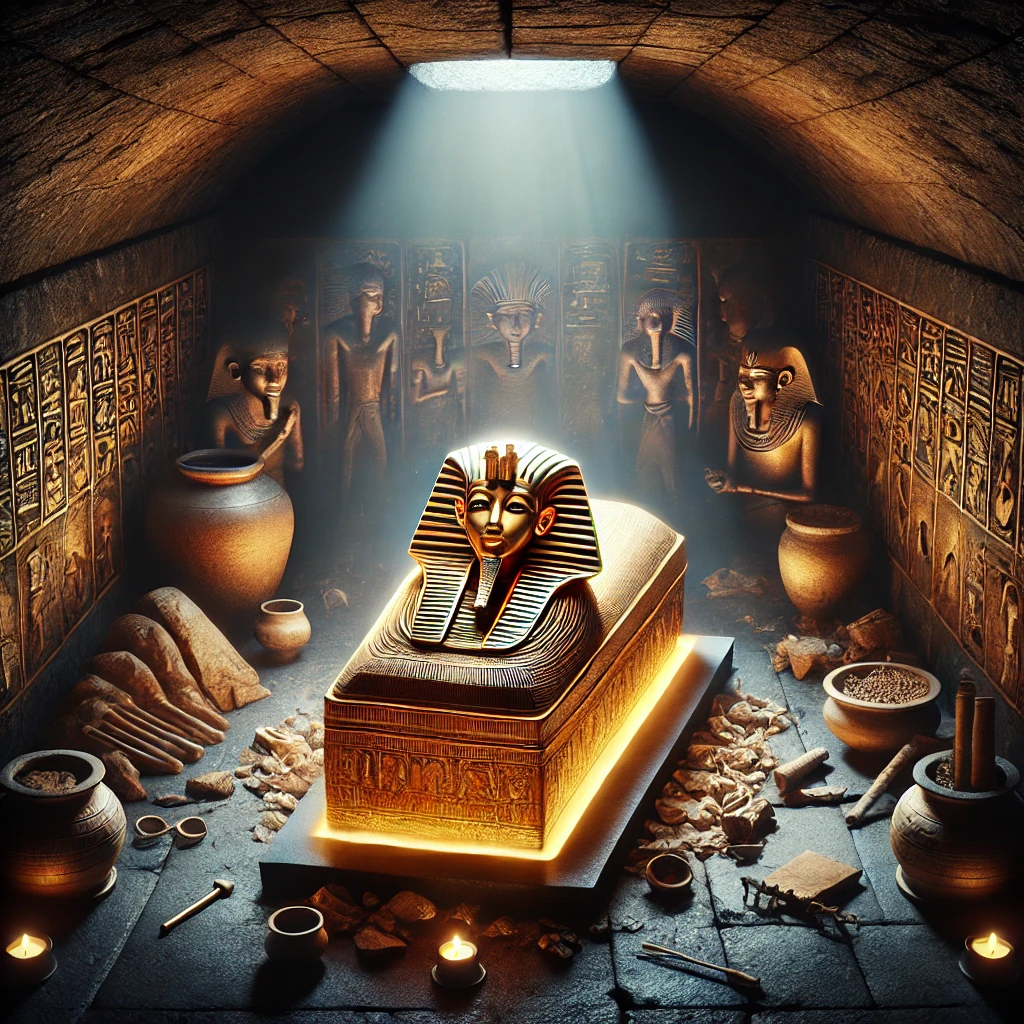On January 3rd, 1924, archaeologist Howard Carter made one of the most significant discoveries in the field of Egyptology when he uncovered the magnificent sarcophagus of King Tutankhamun. The discovery followed two years of intense and often difficult excavation work in the Valley of the Kings. Carter’s findings would not only reveal the golden secrets of the boy king’s tomb but also spark renewed interest in Ancient Egypt and revolutionize the study of Egyptology.

The Search for King Tut’s Tomb
The story of King Tutankhamun’s tomb began in 1922, when Carter, funded by Lord Carnarvon, began his excavation work in the Valley of the Kings. While many tombs had already been uncovered by other archaeologists, Carter was determined to locate the tomb of Tutankhamun, the relatively obscure 18th dynasty pharaoh. Tutankhamun’s death at a young age, likely around the age of 18, and his brief reign had led historians to believe his tomb would be small and unremarkable. However, Carter’s persistence led to a groundbreaking discovery.
On November 4, 1922, Carter uncovered the tomb’s entrance, hidden for over 3,000 years. This marked the beginning of a two-year-long effort to carefully unseal and explore the tomb. While Carter initially uncovered a wealth of treasures, including jewelry, furniture, and chariots, it was the discovery of King Tutankhamun’s sarcophagus on January 3rd, 1924, that captured the world’s imagination. The sarcophagus, which contained the king’s mummified remains, was intricately designed and covered in a layer of stunning gold.

The Unveiling of the Sarcophagus
When Carter and his team uncovered the sarcophagus, it was an extraordinary moment in archaeological history. The sarcophagus was made of solid gold and was encrusted with jewels and intricate designs that reflected the wealth and grandeur of Ancient Egyptian royalty. Carter, along with his team, carefully examined the sarcophagus, and for the first time, the golden secrets of the boy king’s tomb were revealed to the world.
The discovery of the sarcophagus was a triumph of archaeology. It provided invaluable insights into the burial practices, artistry, and religious beliefs of Ancient Egypt. The sarcophagus, and the many treasures within the tomb, highlighted the importance of King Tutankhamun’s life and death in Egyptian history. The artifacts found in the tomb have since been displayed in museums around the world, allowing millions to marvel at the craftsmanship of Ancient Egyptian artisans and gain a deeper understanding of the civilization.
The Lasting Legacy of King Tut’s Tomb
The discovery of King Tutankhamun’s sarcophagus and tomb became an international sensation and had a profound impact on the field of archaeology. The treasures found within the tomb were unparalleled in their magnificence, offering a detailed snapshot of royal life in ancient Egypt. The tomb’s discovery ignited public fascination with Egyptology and spurred new interest in ancient civilizations.
In addition to its cultural impact, the discovery of King Tut’s tomb raised important questions about the preservation of archaeological sites. The exploration of the tomb was meticulously documented, setting a new standard for archaeological excavation and preservation. While the tomb of King Tut remains one of the most famous archaeological discoveries, it also highlighted the need for proper conservation techniques to protect historical sites for future generations.

The discovery of King Tutankhamun’s sarcophagus on January 3rd, 1924, was a defining moment in the field of archaeology. It revealed not only the opulence of Ancient Egypt but also the immense cultural significance of King Tutankhamun’s reign. Howard Carter’s painstaking work uncovered treasures that continue to captivate people around the world and deepen our understanding of Egypt’s ancient past. Today, the tomb of King Tut remains one of the most visited and studied archaeological sites, and its discovery continues to inspire awe and wonder.
